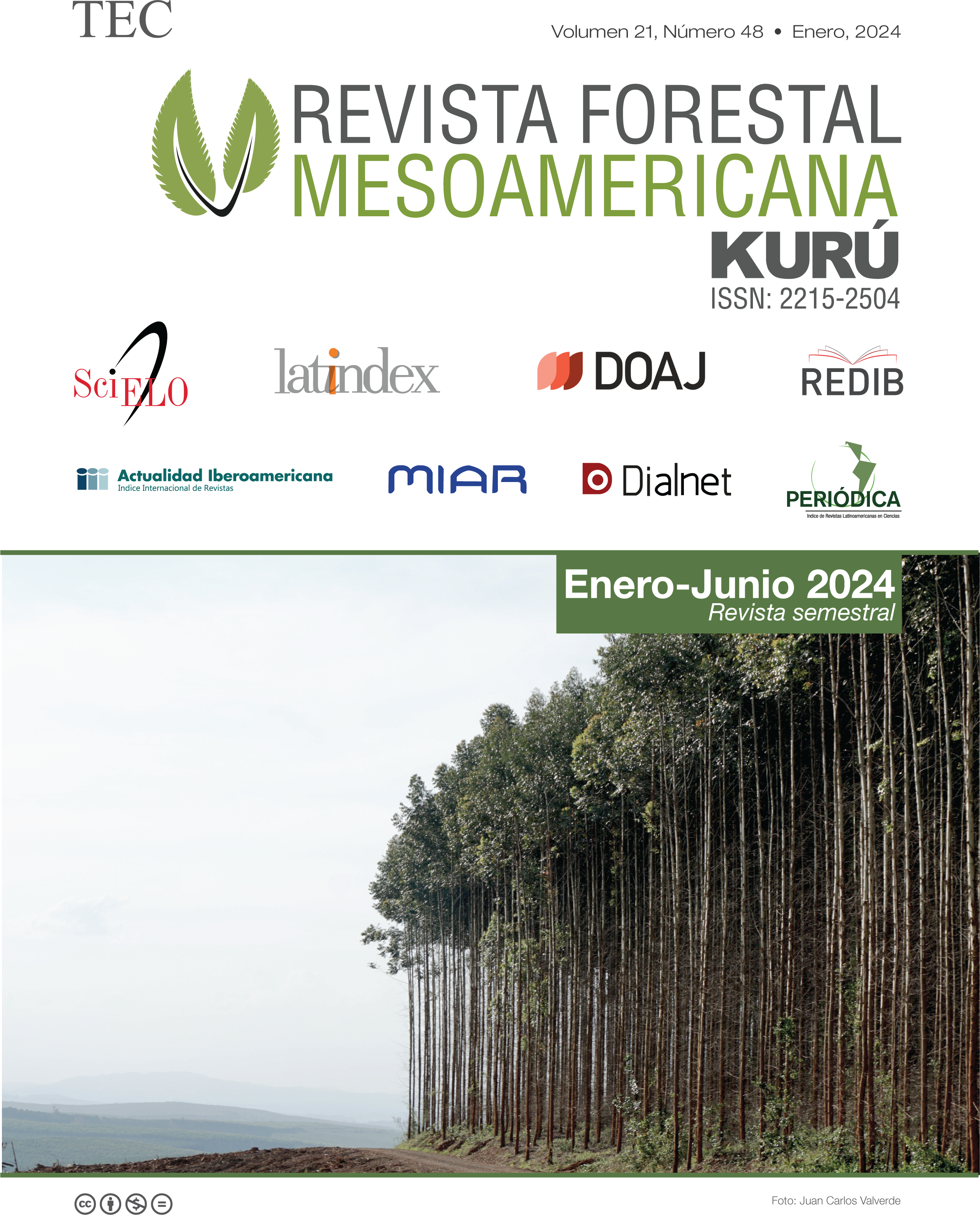Use of a terrestrial laser scanner (TLS) for the structural characterization of tropical dry forest and forest plantations in Costa Rica
Main Article Content
Abstract
Forests monitoring is an essential task for the understanding and management of forest stands, however, the collection of the necessary information to carry out this task is costly and time-consuming. Given the forestry sector's need to develop new efficient and accurate alternatives for tropical forests monitoring that can complement current methodologies, this study was conducted to characterize the structural attributes of forest systems using a terrestrial laser scanner (TLS). Five sites with different successional stages of tropical dry forest (TdF) and five forest plantations of different ages and under different management regimes were characterized by extracting the variables of Stand Height, Effective Number of Layers (ENL), Stand Structural Complexity Index (SSCI) and the percentage of Canopy Openness, out of point clouds obtained from TLS. The results suggest that there is no pattern related with the specific successional stages of the TdF evaluated, however, the comparison between the different forest plantations with TdF reflect a strong contrast between the different groups, which represents a potential for further research on the use of this technology in different tropical forest landscapes.
Article Details

This work is licensed under a Creative Commons Attribution-NonCommercial-NoDerivatives 4.0 International License.
Al enviar un artículo a la Revista Forestal Mesoamericana kurú (RFMK), los autores ceden los derechos patrimoniales a la editorial de la RFMK una vez su manuscrito haya sido aprobado para publicación, autorizando a la RFMK a editarlo, reproducirlo, distribuirlo, y publicarlo en formato físico y/o electrónico, incluido Internet. La titularidad de los derechos morales sobre los trabajos objeto de esta cesión seguirá perteneciendo a los autores.
Este obra está bajo una Licencia Creative Commons Atribución-NoComercial-SinDerivadas 4.0 Unported.


